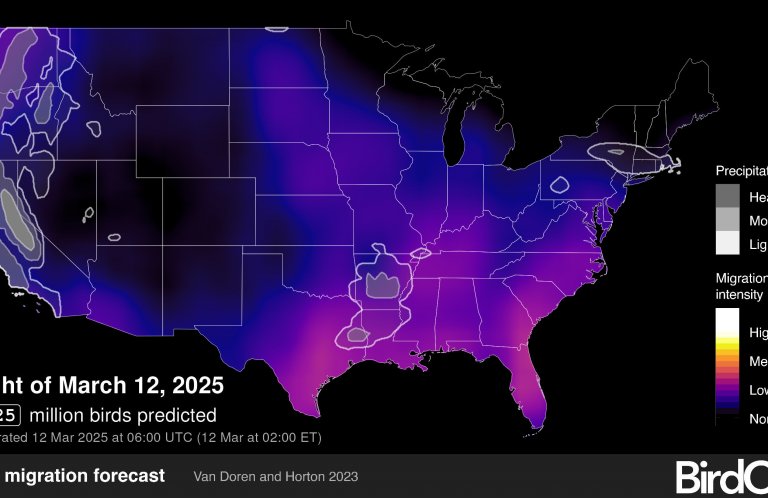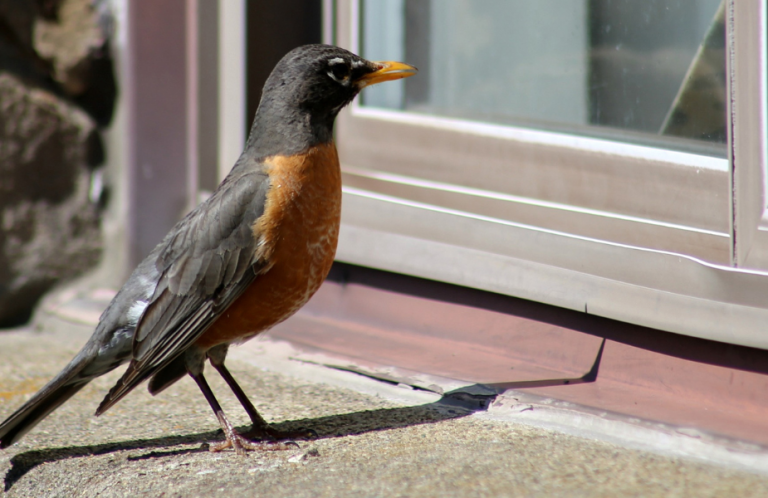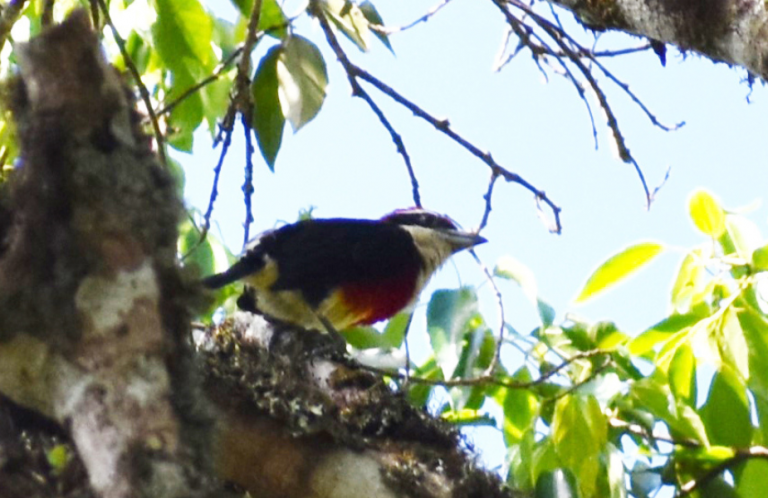Something to Crow About: The Amazing Diet And Eating Habits of American Crows
American Crows aren't your average birds. Possessed with an intelligence rivaling chimpanzees, these crafty birds — among the smartest in the world — have been known to build tools, play games, and even hold “wakes.”
Crows put these smarts to good use when gathering food. They've been known to crack nuts by dropping them from heights onto hard surfaces, and have even been observed working as a team to distract and steal fish from River Otters.
These tricks, coupled with the American Crow's adaptable palate and impressive foraging skills, make its all-encompassing eating habits worth special interest. We've answered some of the most commonly asked questions about American Crows' feeding patterns below.
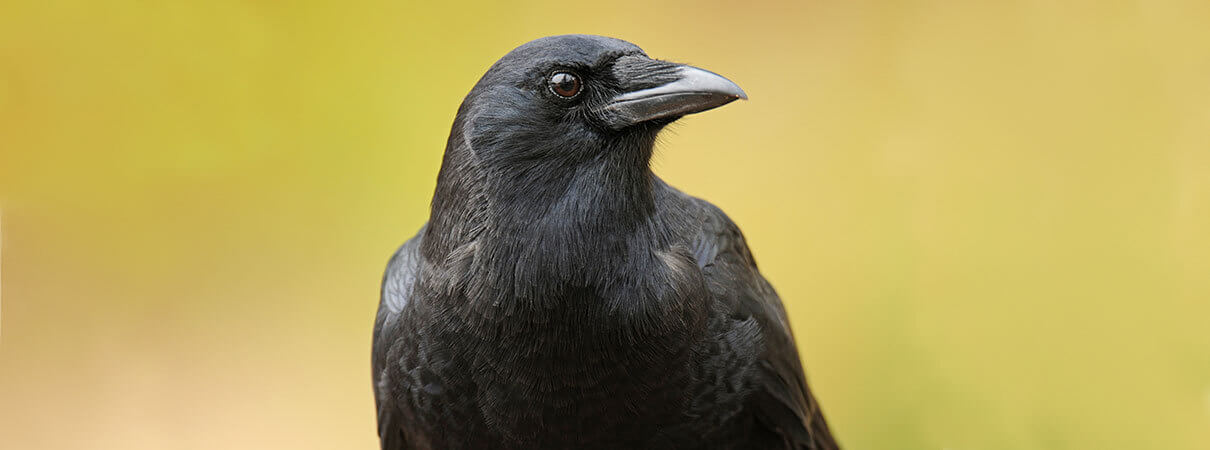
What Do American Crows Eat?
A better question might be: “What do crows not eat?” American Crows are omnivorous opportunists. They eat nearly all edible foods, from crabs and crabapples to birds, french fries, frogs, and carrion. The list is so long, we've organized it into multiple categories for easier consumption.
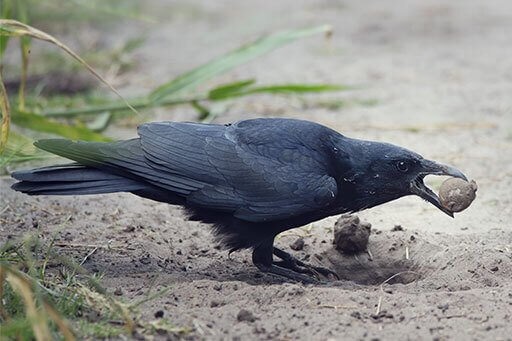
Fruits and Seeds
Seeds and fruits make up nearly three-quarters of the American Crow's diet. This includes: corn, wheat, oats, chokecherries, Poison Ivy, pistachios, grapes, Red Osier Dogwood fruits, Bittersweet Nightshade berries, pecans, and watermelons, among other things.
Insects
American Crows eat a variety of flying and ground-dwelling insects. Their impact on insects inspires mixed feelings, as they eat species considered both troublesome (European Corn Borer and Gypsy Moth) and beneficial (ground beetles and ichneumon wasps).
Amphibians and Reptiles
Turtles in all stages of life — eggs, hatchlings, adults — are prey for American Crows. Crows also hunt snakes, lizards, frogs, and toads.
Bird Eggs
Crows raid the nests of many bird species, including Common Loons, Least Terns, Pinyon Jays, scrub-jays, American Robins, Savannah Sparrows, and Mallards, for this protein-rich food.
Birds
Crows don't only eat bird eggs: They also hunt nestlings, fledglings, and adults of at least several species of birds (including European Starlings and House Sparrows), sometimes catching them in mid-flight.
Mammals
Given their modest size, American Crows typically prey upon small mammals, including deer mice, voles, bats, and shrews.
Fish
Crows wade into belly-deep water to snatch out passing prey, including Gizzard Shad. They have also been known to feast upon the carcasses of post-spawn salmon and trout at fish hatcheries.
Mollusks
Crows eat several species of clam, including the Basket Cockle and Manila Clam.
Carrion
Along with vultures, eagles, gulls, and ravens, American Crows feed upon animal carcasses, including roadkill.
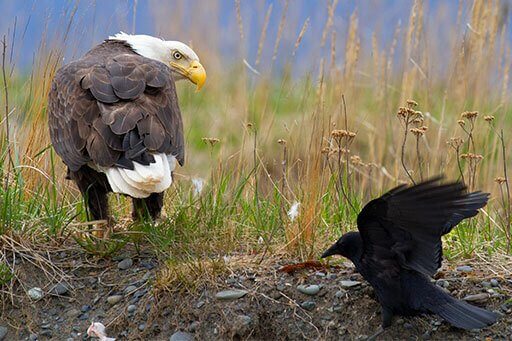
Human Food
Crows will eat almost any human foods they can find. In recent decades, they have been drawn to urban and suburban areas due, in part, to the availability of trash and other easy food sources, such as dog food.
How Do American Crows Gather Food?
Armed with exceptional ingenuity and a remarkably varied skill set, American Crows are able to forage successfully in a multitude of landscapes and conditions.
The majority of food American Crows gather comes from the ground. They use their bills to probe surfaces, flick away unwanted items, tilt or lift objects, and dig through sand or soil.
When pursuing ground-based prey such as grasshoppers, American Crows will run, hop, and fly erratically. Crows also perch in elevated spots, patiently awaiting advantageous dining opportunities, such as an unguarded duck nest.
When it comes to eating foods with protective shells, American Crows have learned there's more than one way to crack the nut. They have been observed dropping clams, nuts, walnuts, pecans, and even turtles, onto hard surfaces while in flight. Although disputed, the claim that crows intentionally drop nuts in the path of passing cars has been supported by subsequent studies.
Do American Crows Eat Squirrels?
Yes, squirrels have a place in the American Crow's diet. Crows, however, don't hunt the bushy-tailed rodents. Instead, they eat carcasses that have partially decomposed or have been torn apart by predators, cars, or other means. Why? Crow bills, although impressive, aren't tough enough to tear squirrel skin.
How Do American Crows Transport Food?
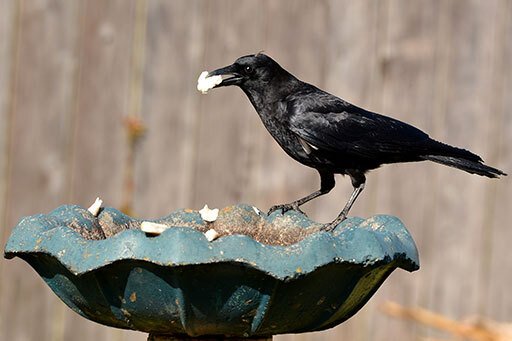
Crows have three ways to carry food, depending on its size and their purpose. To feed chicks or carry small food items, they sometimes stow food in an extensible pouch at the base of the throat. Food too big to be carried this way can be transported in their bills, or, occasionally, when even larger, in their feet.
Do American Crows Cache Food?
Yes, American Crows hide food for later consumption in trees, under snow, or on the ground. They have been known to cache fish, clams, pecans, corn, frogs, snakes, carrion, and dung. When dealing with larger items such as frogs, American Crows will dismember the animal, often hiding pieces in various places.
Do American Crows Have a Favorite Food?
American Crows are not picky eaters! However, we do know that they tend to eat plants more often than they do animals. One study found that, on average, their diet consists of 72 percent plant and 28 percent animal matter.
Among the most popular plant foods are corn, miscellaneous other grains, and wild fruits. It's also important to note that their consumption patterns are not static: Crows capitalize on feeding opportunities as they arise, and their diet varies by season and location.
What Do Nestlings (Baby Crows) Eat?
During their nestlings' first few weeks of life, American Crows feed their young partially digested food. Primarily consisting of animal matter, this protein-heavy diet is critical for the fast-growing chicks, which typically leave nests after only four weeks. As nestlings grow, they are fed larger animal scraps. The most commonly consumed foods include: beetles, grasshoppers, spiders, millipedes, amphibians, and reptiles.
Do American Crows Work Together to Gather Food?
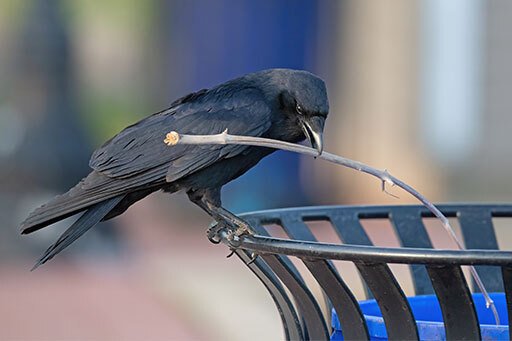
American Crows are flexible when it comes to gathering food. They work alone, in pairs, in family groups, and also in small and large flocks. When necessary, they can cooperate in surprisingly complex ways, and have been observed teaming up to distract and steal food from other animals.
Are American Crow Populations Increasing?
Yes. American Crow numbers have grown by more than 90 percent over the last 40 years, and the global breeding population is now estimated to be 28 million. This dramatic rise has been linked to their ability to successfully adapt to human-dominated environments.
While American Crows have mainly thrived — their numbers did take a hit following the arrival of West Nile Virus in 1999 — many other bird species have fared poorly during this period of environmental change.
The combined impact of invasive species, window collisions, habitat loss, and pesticide use, among other things, has contributed to staggering population losses in many species. Over the last 50 years, North American bird populations have declined by 2.9 billion birds. This stunning decline accounts for nearly 30 percent of all birds living or visiting the continent.
American Bird Conservancy and other conservation groups are working to reduce threats and help bird populations rebound. Learn more about how you can get involved and live a bird-friendly life.





































